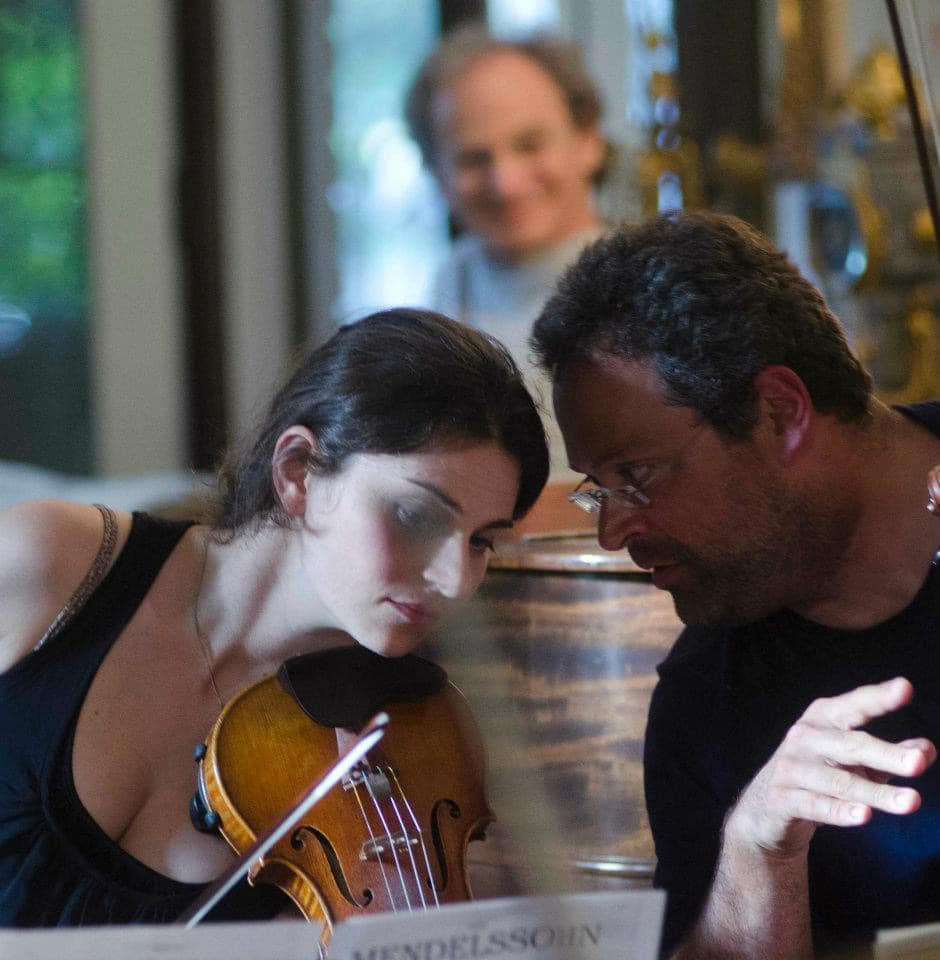by Daniel Hathaway

ChamberFest Cleveland has shared some archived concert videos in memory of the late violinist and violist Yehonatan Berick, who died recently at the age of 52. Click on the following links to watch Shostakovich’s Two Pieces, Op. 11, from 2012, the first movement of Mendelssohn’s Quintet No. 1 from 2013, and the first movement of Brahms’ Sextet, also from 2013.
Following up on his earlier survey of how the pandemic has affected European presenters and organizations, Bachtrack editor David Karlin moves on to consider the “State of Play in Asia, America, and Oceania.”
In a similar vein, Washington Post music critic Michael Andor Brodeur interviews representatives of choruses to get a sense of how they’re coping these days. Read Scattered and silenced by the pandemic, choral groups are trying to find their voice.
And in Van Magazine, Alarm Will Sound artistic director Alan Pierson relates the ‘bureaucratic feat of Olympian proportions” involved in rehearsing and conducting a new opera in Germany with COVID-19 travel restrictions in effect. Read his interview with Jeffrey Arlo Brown here.
TODAY’S ALMANAC:
On this date in 1483, German theologian, religious reformer and composer Martin Luther was born in Eisleben. Author of more than 30 hymns in the German vernacular, Luther joined composer Johann Walther to publish the first protestant hymn book in 1524. Probably his best-known hymn is Ein feste Burg ist unser Gott, based on Psalm 46 and originally set to an “isorhythmic” tune whose dance-like rhythms had been smoothed out by the time J.S. Bach used it in his Cantata BWV 80. Boston-based organist Bálint Karosi improvises on that sturdier version of tune on the 1995 Richards & Fowkes organ in St. John’s Lutheran Church, Stamford, Connecticut.
French composer, claveciniste, and organist François Couperin was born on this date in 1668. Part of the Couperin dynasty that occupied the organ bench at the church of St. Gervais in Paris, he wrote two complete organ masses, one for parishes, another for convents, as well as some 230 individual harpsichord works and suites of chamber works. He also carried on a correspondence with Johann Sebastian Bach — a visitor to the Bach household after the composer’s death found that his widow had cut up letters to cover jam pots.
The noted French organist Michel Chapuis recorded the Mass for Parishes on the 1775 Isnard organ at the Basilique Sainte-Marie Madeleine in Provence. Listen here. (The organ verses are meant to be performed in alternation with chant.)
Two of Couperin’s most delightful works are the Apotheoses of Corelli and Lulli, narrated musical portraits of the two composers and their different national styles. Watch a video of a Juilliard master class where Les Arts Florissant’s William Christie comments on student performances of Le Parnasse, ou L’Apothéose de Corelli, recorded at the school in September, 2019.
And on this day in 1909, Gustav Mahler led the New York Philharmonic from the keyboard of an altered piano in his own symphonic arrangements of movements from J.S. Bach’s orchestral suites. In a letter to a friend back in Europe, Mahler wrote
“I had great fun recently with a Bach concert, for which I worked out the basso continuo conducting and improvising quite in the style of the old masters, playing on a rich-toned spinet specially adopted by Steinway for the purpose. This produced a number of surprises for me – and also for the audience. It was as though a floodlight had been turned on to this long-buried literature.”
Too bad we don’t have a recording to share.



